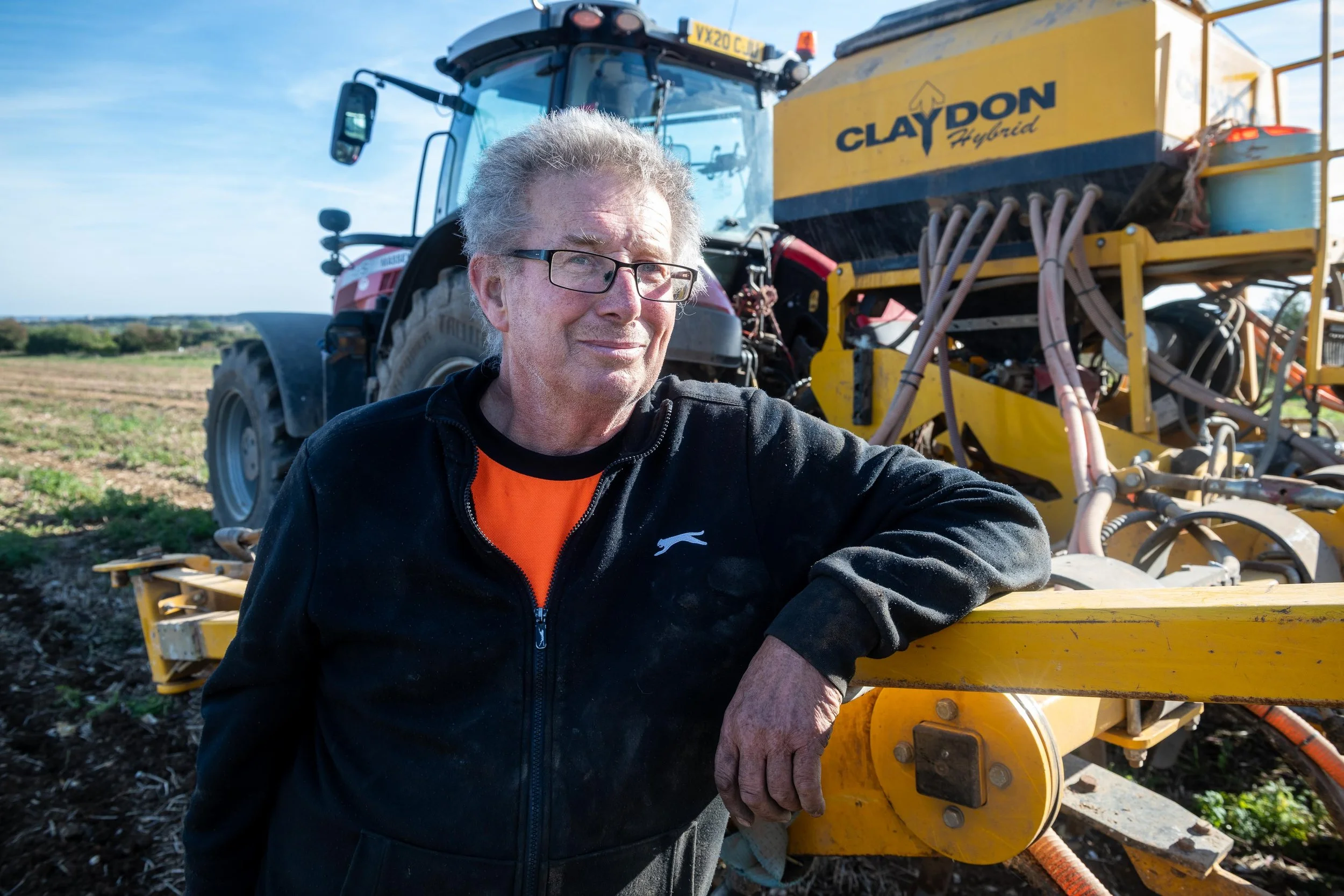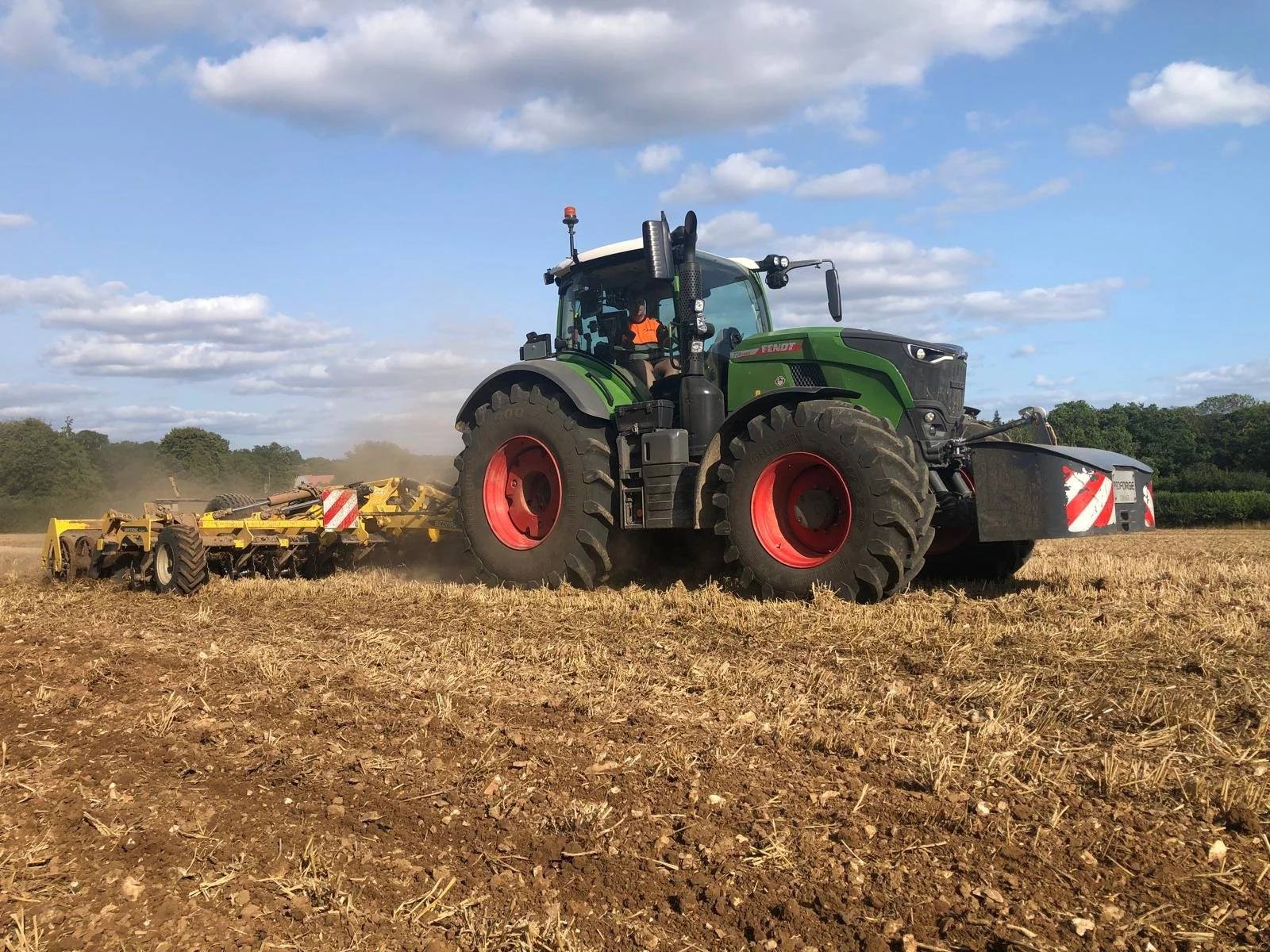It takes teamwork to bring in the harvest at The Manydown Rural Estate
A warm dry spring and a hot summer (so far!) has meant an earlier than usual start to harvest on the Estate’s farms this year (2025).
But the team in place has proved more than equal to the task, despite changeable weather in mid-July that has meant some very late nights on the combine harvester and grain trailer to get the crops in the store before the rain.
Olly Stratford leads the farm team on the Estate.
The four-strong team, who work for The Manydown Rural Estate’s farm contractors EC Drummond, led by farm manager Olly Stratford, has been bolstered this year by two seasonal workers helping for the duration of harvest.
Olly said the whole team has worked well together and harvest had been going largely to plan, despite the earliest ever start that he had known with combining underway from July 1. As to yields, a wet autumn and winter followed by the exceptionally dry spring has taken a toll.
“The yields have been a little disappointing across the board so far but that’s not a surprise given the weather we have experienced during this cropping season,” Olly said.
“The 76.50 hectares (189 acres) of winter barley which has been harvested to sell as feed barley to the livestock feed sector averaged 8.01 tonnes per hectare.
“We are seeing huge variation across soil types, in any one field the yield ranges from 6.14 tonnes per hectare up to 11.15 tonnes per hectare in the really good bits.”
Olly’s team includes Charlie Harris, who now works half the year on the Estate, and full-time employees Max Greenwood and Lee Goodman.
Max joined Olly and Lee full-time, after completing his university placement.
Max has been at the Estate for just over a year after completing a degree at the Royal Agricultural University in Cirencester. He spent six months on the Estate on a placement while studying and is delighted to have gained a full-time position not far from his home.
His colleague, Lee, 49, the combine driver, has been a farmworker since he left school at 16, with just a three-year break from agriculture during that period. He said 2025 marked his fourth harvest at The Manydown Rural Estate.
“My birthday is on the 17th of July and nearly every year that’s when we would start the harvest,” he said. “This year we got going more than two weeks before that.”
Lee said sunshine and showers later into July had meant for some long days, with the team out until 2am one night when rain threatened the following day.
“It’s swings and roundabouts,” he said. “You work late when the weather is good, and you’ll get a day off when it’s raining.” Lee has seen a lot of changes in farming since he started, with major developments in technology and a consequent reduction in workers.
Someone who has seen even more change at Manydown is Charlie Harris, who started on the Estate as a farm worker 51 years ago and is still going strong aged 70, working six months of the year on cultivation duties and harvest.
Charlie has seen big changes in technology
Charlie, who spends most of his working life today behind the wheel of a 400-horsepower tractor, said the changes had been remarkable.
“There were 20 people working here when I first started. Now we have two full timers, plus me as a part timer, and Olly, of course.
“I do all the cultivating, sub-soiling and ploughing. Years ago, it was all done by looking at a marker and keeping to the line. Now it’s all done with GPS.
“I remember when the satellite mapping first came in. The chap who came down to set it all up said, “sit on your hands.” He was trying to show us that we didn’t need to touch anything, just let the machine do the job.
“The technology is absolutely wonderful. It makes my job so much easier now. I’ve never had a problem with the changes – you’ve just got to embrace it.”
Charlie works alongside a recently graduated student, Joe Smith-Jones who has completed a two-year Level Three Agriculture Diploma at Sparsholt College and has a seasonal job at the Estate.
His ambition is to find a full-time job in agriculture, and he would also like to travel to experience farm work in the United States, Australia and New Zealand.
Joe said the harvest team at The Manydown Rural Estate all got on well. “It’s a nice small team,” he said. “If there’s a wet day here and we’re all sitting around having lunch, it’s a good time to talk – you can see how everyone is getting on.
“It’s valuable to have those relationships – it means no one feels isolated. Isolation – where you spend all day in the tractor cab and don’t see anyone from morning ‘til night – can be a problem in farming.”
Fellow seasonal worker Rhys Hunt, 26, has also been pleased with the camaraderie of the team. “We do have a laugh – everyone gets on,” he said.
Seasonal workers, Joe and Rhys, joined the team for harvest and add to the camaraderie.
Rhys, who describes himself as a city boy, growing up in Welwyn Garden City, Hertfordshire, has always loved the countryside and has worked as an underkeeper on a shoot.
“I had always wanted to try a harvest and this year I have had the opportunity to give it a try,” he said.
Rhys said his ‘real job’ was restoring wooden
floors and he will probably return to it once the harvest is finished – although he might try for more farm work.
Harvest 2025 comprises a total arable area of 1,432 hectares (3,538 acres), including an area of land farmed in agreement with Manydown Garden Communities.
Combinable crops have been grown on just over 1,000 hectares (2,471 acres) of mainly chalk soils, and include barley, wheat, oil seed rape, beans, oats, and triticale - a hybrid of wheat and rye.
The Estate has also grown 205 hectares (507 acres) of wholecrop, plus an area of borage – for use in several industries, including pharmaceuticals.
Some 220 hectares (544 acres) - about 15% of the Estate land - is entered into either Mid-Tier Countryside Stewardship or the Sustainable Farming Incentive (SFI).
Under these schemes the Estate creates vital habitats by implementing ‘options’ including, wildflower meadows, wild bird seed mixes, legume fallow, buffer strips, beetle banks, and many miles of new hedgerows.
In recent years steps have been taken to reduce the impact of the agricultural operation on the environment, including a reduction in the use of pesticides and fossil fuels through a more targeted approach with the help of satellite technology.





